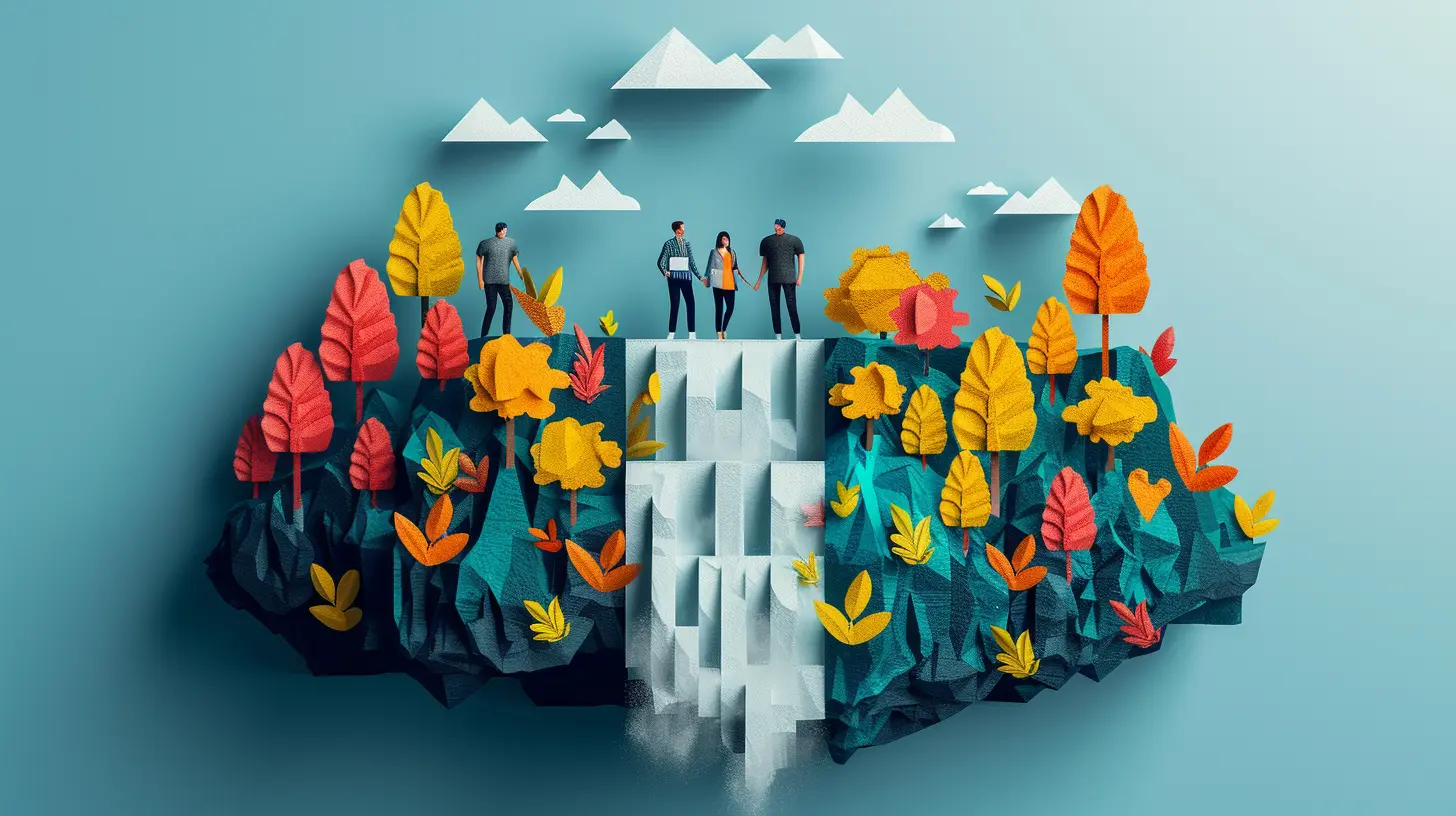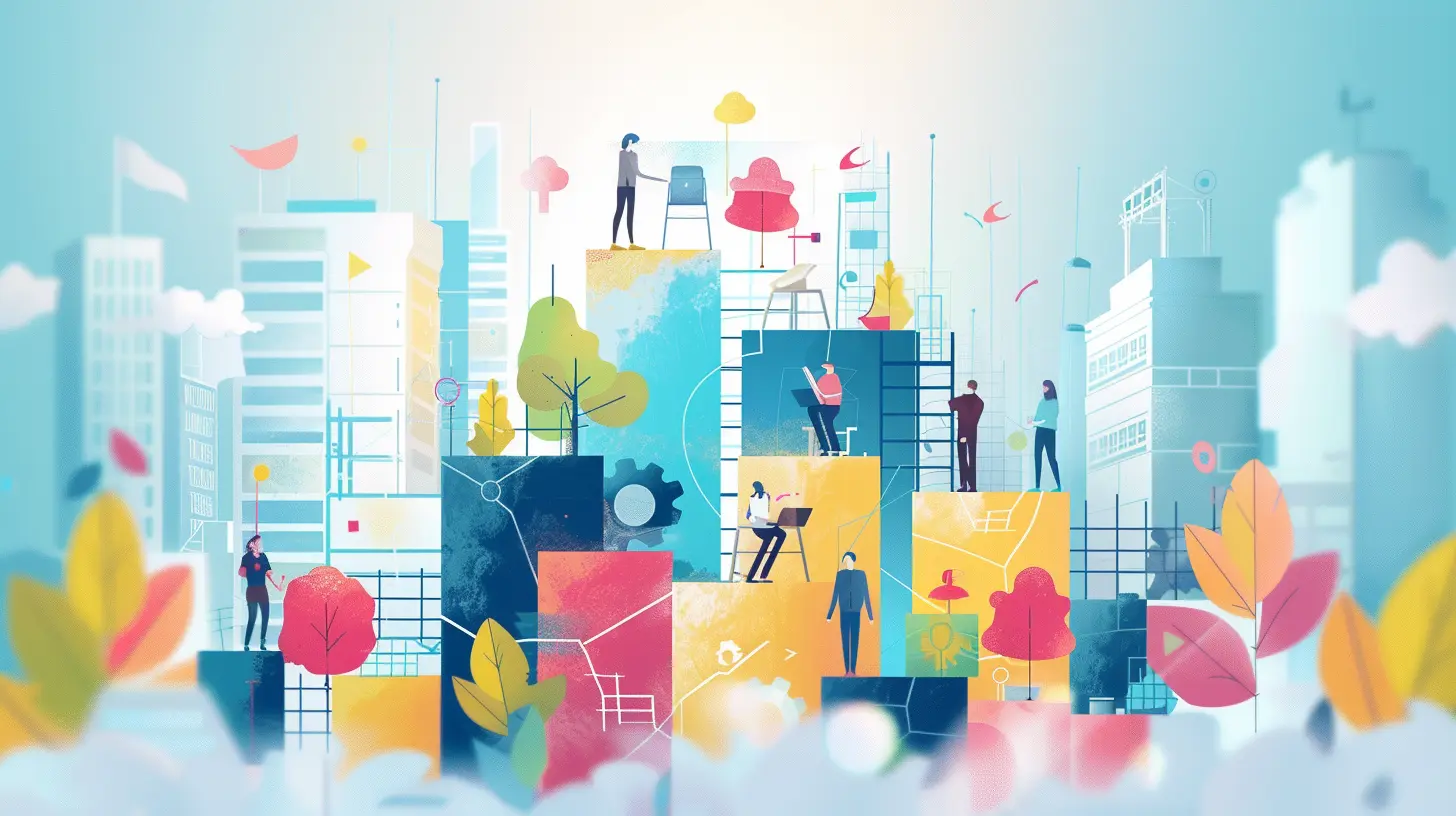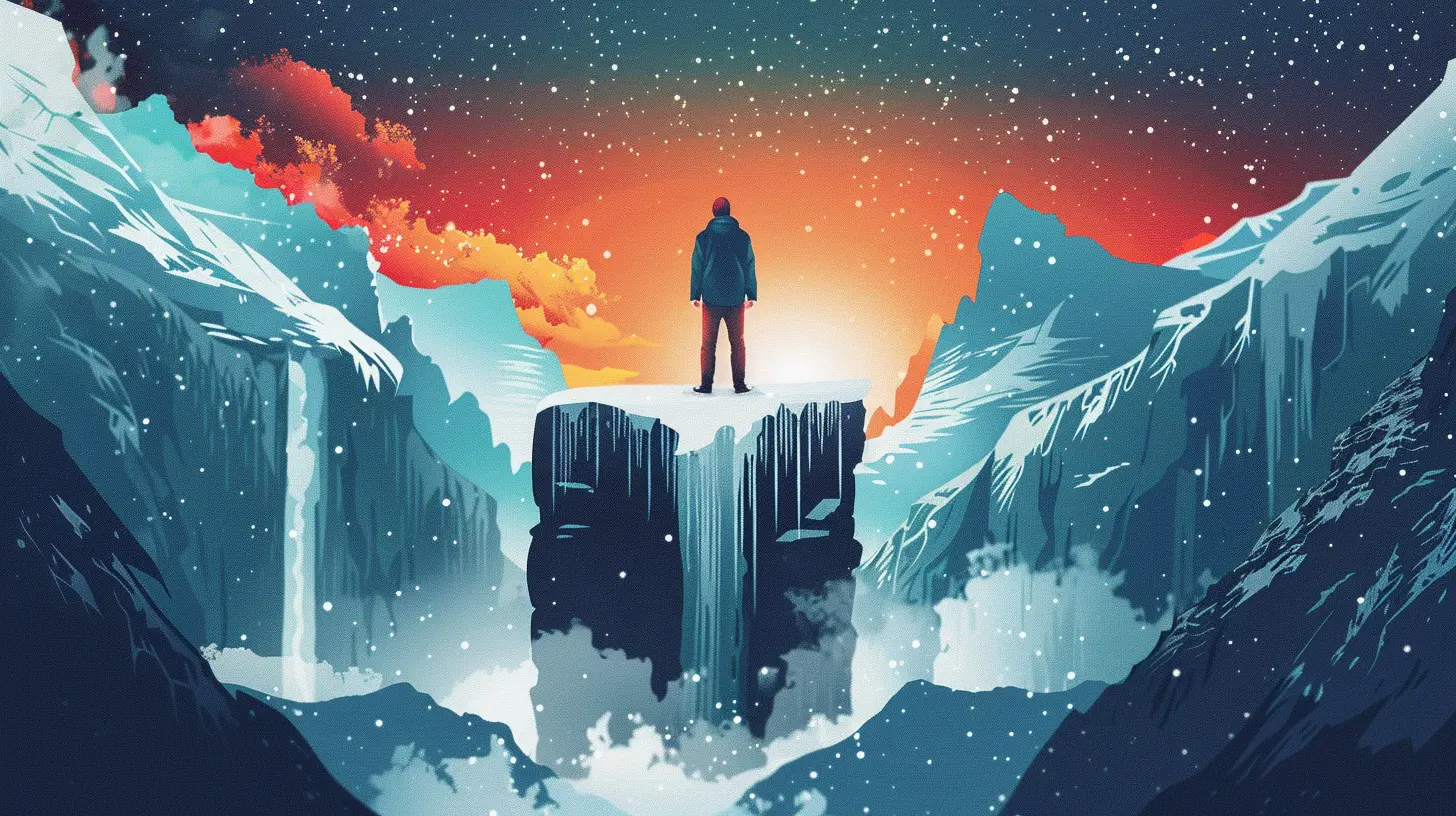Agile vs. Waterfall Projects: Choosing the Right Approach
9 January 2025
At some point, we’ve all encountered a critical decision where we had to choose between two distinct paths. Choosing the right project management approach is no different. You’re standing at the crossroads of Agile and Waterfall – two methodologies as different as night and day. But how do you decide which one suits your project? After all, picking the wrong one can turn into a recipe for disaster faster than you can say "deadline missed."
In this article, we’re going to break it all down – the pros, the cons, and the scenarios where you should lean toward one over the other. So, grab a coffee, get comfy, and let’s dive into the epic showdown: Agile vs. Waterfall.
What is Agile?
Picture this: you’re building a car. Instead of assembling the whole vehicle, you start with a skateboard, then add a handlebar, then upgrade to a bike, and eventually land on a full-blown car. That’s Agile in a nutshell. It’s iterative and incremental. You build small, test frequently, and adapt as the project evolves.Agile focuses on collaboration, flexibility, and delivering value as quickly as possible. Think of it as an evolving dance – one that adjusts to the rhythm of change.
Key Features of Agile:
- Iterative Process: Instead of delivering everything all at once, Agile delivers in small, workable chunks known as iterations (or sprints).- Customer-Centric: The customer doesn’t just sit back and wait for the end product. They’re actively involved throughout the development process.
- Flexibility: Agile thrives on change. If new requirements pop up mid-project, the team adapts without breaking a sweat (well, most of the time).
- Collaboration: Developers, stakeholders, and customers work hand-in-hand, fostering a more transparent process.

What is Waterfall?
Now, imagine you’re baking a cake. You measure the ingredients, mix them in a specific order, bake the cake, then frost it. Everything happens in sequence – you can’t frost the cake before it’s baked. That’s essentially the Waterfall model.Waterfall is linear, structured, and predictable. Each phase flows neatly into the next, like an actual waterfall (hence the name). You plan, design, execute, test, and deliver – one step at a time.
Key Features of Waterfall:
- Linear Process: Once you finish one phase, you move on to the next. There’s no turning back.- Documentation-Driven: This model loves its documentation. Every requirement, design, and testing process is meticulously recorded.
- Predictability: Since everything is planned upfront, you know exactly what to expect.
- Minimal Customer Involvement: The customer tends to watch from the sidelines until the final product is delivered.

Agile vs. Waterfall: The Main Differences
Now, let’s get down to the nitty-gritty. While both methodologies aim to deliver high-quality results, they go about it in completely different ways. Let’s put them head-to-head.| Feature | Agile | Waterfall |
|----------------------|---------------------------|---------------------------|
| Approach | Iterative & Adaptable | Linear & Rigid |
| Flexibility | Highly adaptable to change| Not flexible once started |
| Customer Involvement | Continuous involvement | Minimal involvement |
| Project Size | Ideal for dynamic projects| Best for well-defined projects|
| Risk Management | Issues identified early | Issues found late in cycle|
| Delivery | Delivered incrementally | Delivered all at once | 
When to Choose Agile
So, when should you go the Agile route? Simple – when your project is less of a paved road and more of an uncharted jungle. Agile works best when the requirements are unclear or likely to change, or when speed and creativity reign supreme.Scenarios for Agile:
- Innovation-Driven Projects: If you’re launching a cutting-edge product or service, you’ll need room to experiment and pivot. Agile thrives in this space.- Collaborative Teams: Got a team of dynamic, cross-functional folks? Agile allows them to flex their muscles and work together seamlessly.
- Tight Deadlines: Agile can deliver functional pieces quickly, which is helpful if you’ve got a sprint to the finish line.
Example:
Say you’re developing an app for a startup. You don’t know how users will respond to the first version, and market trends are shifting. Agile lets you release a basic version (Minimum Viable Product or MVP), gather feedback, tweak it, and keep iterating.When to Choose Waterfall
If Agile is a free-spirited artist, Waterfall is an architect with a blueprint. It’s reliable, structured, and predictable. Waterfall shines when you’ve got a clear vision of what the end product should look like.Scenarios for Waterfall:
- Defined Projects: If your project’s requirements are set in stone (like government contracts or highly regulated industries), Waterfall is a safe bet.- Limited Changes: Are you 99.9% sure there will be no changes mid-project? Waterfall eliminates the guesswork.
- Budget Constraints: Waterfall’s detailed planning reduces the risk of unforeseen expenses.
Example:
Imagine you’re constructing a skyscraper. You can’t just “iterate” a building into existence – you need detailed plans, fixed requirements, and a linear process. Waterfall keeps everything on track.Strengths and Weaknesses
No methodology is perfect. Both Agile and Waterfall have their strengths and weaknesses. Let’s lay it all out on the table.Agile Strengths:
- Flexibility in responding to changes.- Frequent feedback results in higher customer satisfaction.
- Early identification of risks and issues.
Agile Weaknesses:
- Requires skilled, self-organized teams.- Less focus on documentation can create headaches down the line.
- Not ideal for projects with fixed budgets or timelines.
Waterfall Strengths:
- Clear structure and documentation.- Easy to track progress and manage dependencies.
- Predictable budget and timelines.
Waterfall Weaknesses:
- Inflexible to change once the project begins.- Testing happens late in the process, increasing the risk of major rework.
- Limited customer involvement can lead to a mismatch in expectations.
Hybrid Approach: The Best of Both Worlds?
Why pick just one when you can have both? Enter the Hybrid Methodology – the love child of Agile and Waterfall. This approach uses the structured planning of Waterfall alongside the adaptability of Agile.For example, you can use Waterfall to map out the high-level structure of a project and Agile for the execution phase. It’s perfect for projects that require flexibility without letting go of organization.
Agile vs. Waterfall: Questions to Ask Yourself
If you’re still torn, here are a few questions to help steer you in the right direction:1. Do you expect the project requirements to change frequently?
2. How involved will the customer or stakeholder be?
3. What’s more important: flexibility or predictability?
4. How comfortable is your team with either methodology?
Remember, there’s no one-size-fits-all answer. It’s about what suits your project, your team, and your end goals. Choosing the right approach is like picking the right vehicle for your journey – you wouldn’t take a sports car off-roading, right?
Conclusion
At the end of the day, Agile and Waterfall aren’t enemies. They’re simply different tools designed to solve different problems. Whether you need the flexibility of Agile or the structure of Waterfall boils down to your project’s unique needs. And, hey, if you’re feeling bold, there’s always the hybrid route.No matter what you choose, the key is to communicate, collaborate, and adapt when necessary. Because, let’s face it, no project – and no methodology – is perfect.
all images in this post were generated using AI tools
Category:
Project ManagementAuthor:

Baylor McFarlin
Discussion
rate this article
18 comments
Farrah McClary
Choosing the right project approach can transform your team's success! Embrace the flexibility of Agile or the structure of Waterfall, and empower your projects to achieve remarkable results. Keep innovating!
March 21, 2025 at 12:54 PM

Baylor McFarlin
Thank you for your insights! Choosing the right approach can indeed make a significant difference in project outcomes. Innovation thrives when teams align their methodology with project needs.
Carly McMillan
Both Agile and Waterfall methodologies have their strengths and weaknesses, making the choice context-dependent. Agile offers flexibility for dynamic projects, while Waterfall provides structure for well-defined requirements. Understanding your project’s needs is key to selecting the appropriate approach.
March 1, 2025 at 3:28 AM

Baylor McFarlin
Thank you for your insightful comment! Indeed, the choice between Agile and Waterfall hinges on the specific needs and context of the project. Understanding those requirements is crucial for success.
Dior McGeehan
Embrace flexibility with Agile for innovation or opt for Waterfall's clarity in structure—choose the approach that aligns with your project vision!
February 17, 2025 at 5:54 AM

Baylor McFarlin
Thank you for your insight! Choosing the right approach depends on project needs—Agile fosters innovation and adaptability, while Waterfall provides clarity and structure. It's all about aligning with your vision!
Molly McMillan
Great article! Your insights on Agile and Waterfall methodologies really helped clarify the differences. Choosing the right approach can truly make a difference in project success. Thank you for sharing!
February 5, 2025 at 9:54 PM

Baylor McFarlin
Thank you for your kind words! I'm glad the article provided clarity on Agile and Waterfall methodologies. Your feedback is much appreciated!
Maribel Flores
Embrace Agile for flexibility; Waterfall is outdated. Adapt or be left behind!
February 2, 2025 at 3:35 AM

Baylor McFarlin
While Agile offers flexibility, Waterfall can still be effective for projects with well-defined requirements. The choice depends on the project context and goals.
Lorelei Hardy
Great insights! It’s crucial to understand both approaches to choose what fits best.
January 30, 2025 at 8:55 PM

Baylor McFarlin
Thank you! Understanding both methodologies is indeed key to making an informed decision.
Wren McDowell
Great insights on Agile and Waterfall! Choosing the right approach truly depends on a project's unique needs and dynamics. Embracing flexibility while understanding structure can lead to successful outcomes. It's all about finding the balance that best serves your team's goals.
January 27, 2025 at 1:08 PM

Baylor McFarlin
Thank you! I appreciate your insights on balancing flexibility and structure in project management. It's crucial to tailor the approach to each project's unique needs for optimal success.
Amelia Benton
Both Agile and Waterfall methodologies offer unique advantages, making the choice context-dependent. Agile promotes flexibility and rapid iteration, ideal for dynamic projects, while Waterfall ensures structured planning and clear milestones, suitable for projects with defined requirements. Understanding project needs and team dynamics is crucial for selecting the optimal approach.
January 22, 2025 at 4:32 AM

Baylor McFarlin
Absolutely! The choice between Agile and Waterfall should be guided by project specifics and team dynamics, as each methodology brings distinct strengths suited to different environments.
Beth Simon
In "Agile vs. Waterfall Projects," the author effectively highlights the strengths and weaknesses of each methodology. Agile's flexibility and responsiveness make it ideal for dynamic environments, while Waterfall's structured approach suits well-defined projects. Ultimately, the choice hinges on project requirements and team dynamics, emphasizing the need for tailored strategies.
January 20, 2025 at 11:59 AM

Baylor McFarlin
Thank you for your insightful comment! I appreciate your recognition of how project requirements and team dynamics play a crucial role in selecting the appropriate methodology.
Astoria Gonzalez
Choose your flow, ride the wave!
January 18, 2025 at 1:54 PM

Baylor McFarlin
Absolutely! Choosing the right approach—agile or waterfall—depends on your project's unique needs. Ride the wave that aligns with your goals!
Reese Beck
In the dance of projects, choose your flow; Agile's rhythm or Waterfall's grace, let your vision guide the show.
January 12, 2025 at 3:28 AM

Baylor McFarlin
Thank you for your poetic insight! Choosing the right approach indeed shapes the project's success—Agile for adaptability and Waterfall for structure.
Oscar Green
Choosing between Agile and Waterfall depends on project goals and team dynamics. Prioritize wisely.
January 11, 2025 at 11:57 AM

Baylor McFarlin
Absolutely! The choice between Agile and Waterfall should align with project objectives and team capabilities for optimal results.
Avery McCray
In the evolving landscape of project management, choosing between Agile and Waterfall isn't merely a matter of preference; it's a reflection of organizational culture and adaptability. The right approach fosters not just efficiency, but also innovation, collaboration, and a deeper connection to stakeholder needs.
January 11, 2025 at 3:29 AM

Baylor McFarlin
Thank you for your insightful comment! You're absolutely right—organizational culture and adaptability play crucial roles in determining the most effective project management approach.
Renee McFee
Great insights on project management methodologies! I appreciate the clarity you provided on Agile and Waterfall. Choosing the right approach is crucial, and your article helps in making informed decisions. Thank you!
January 10, 2025 at 7:48 PM

Baylor McFarlin
Thank you for your kind words! I'm glad you found the article helpful in navigating project management methodologies.
Spike McQuiston
This article succinctly outlines the key differences between Agile and Waterfall methodologies. Understanding the strengths and weaknesses of each approach is essential for selecting the right framework that aligns with your project's goals and team dynamics.
January 10, 2025 at 12:25 PM

Baylor McFarlin
Thank you for your insightful comment! Understanding both methodologies is indeed crucial for making informed decisions that best suit project needs.
Kassandra Barnes
This article succinctly highlights the critical differences between Agile and Waterfall methodologies. Understanding the unique project requirements and team dynamics is essential for selecting the appropriate approach, as both frameworks offer distinct advantages that can significantly influence project outcomes.
January 10, 2025 at 5:12 AM

Baylor McFarlin
Thank you for your insightful comment! I completely agree that recognizing project needs and team dynamics is key to choosing the right methodology. Each approach has its strengths that can significantly impact success.
Beth McIlroy
This article effectively highlights the key differences between Agile and Waterfall methodologies. It encourages readers to reflect on their project's needs and adapt their approach accordingly, emphasizing that no one-size-fits-all solution exists in project management.
January 9, 2025 at 8:19 PM

Baylor McFarlin
Thank you for your feedback! I'm glad you found the article helpful in understanding the differences between Agile and Waterfall methodologies. Adapting to project needs is indeed crucial for success!
Luma McLain
Choosing between Agile and Waterfall depends on project dynamics; Agile offers flexibility for evolving requirements, while Waterfall suits projects with well-defined timelines and deliverables. Balance is key.
January 9, 2025 at 11:37 AM

Baylor McFarlin
Thank you for your insightful comment! You’ve captured the essence of both methodologies perfectly. Striking the right balance based on project needs is indeed crucial.
MORE POSTS

Turning Risk into Reward: How Consultants Tackle Uncertainty

Global Expansion Strategies: Adapting Business Models for New Markets

Leveraging Blockchain for Smarter Loyalty Programs

Key Metrics for Measuring Project Performance

Local SEO Strategies to Dominate Your Market

Is It Time to Re-Evaluate Your Business Entity for Tax Efficiency?

Entering International Markets: Best Practices for Success

Blockchain Technology and Its Role in Reshaping Global Economies

Navigating Change: The Role of a Business Consultant

Developing a Winning Entrepreneurial Vision for Your Life and Business

Promoting Collaboration Among Project Stakeholders